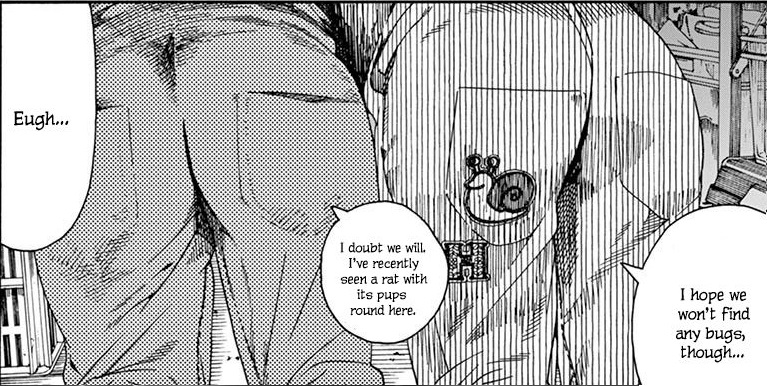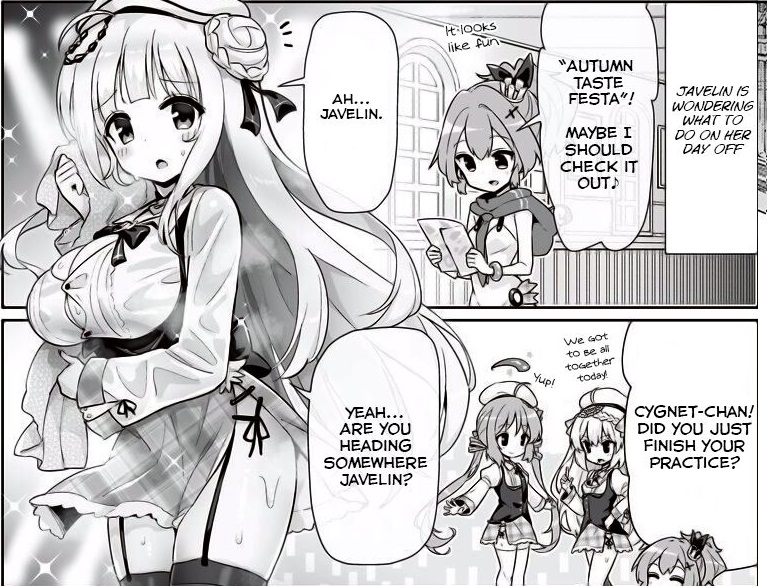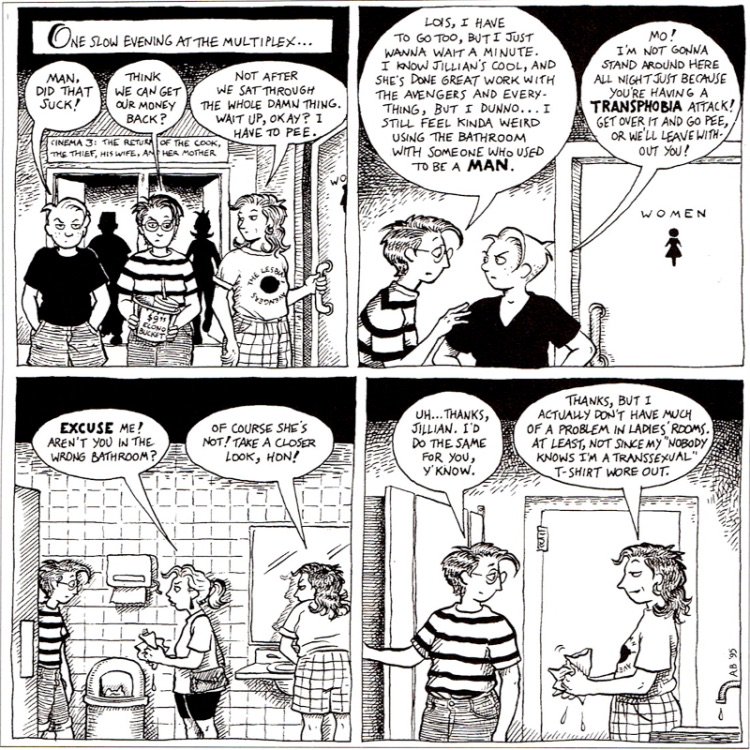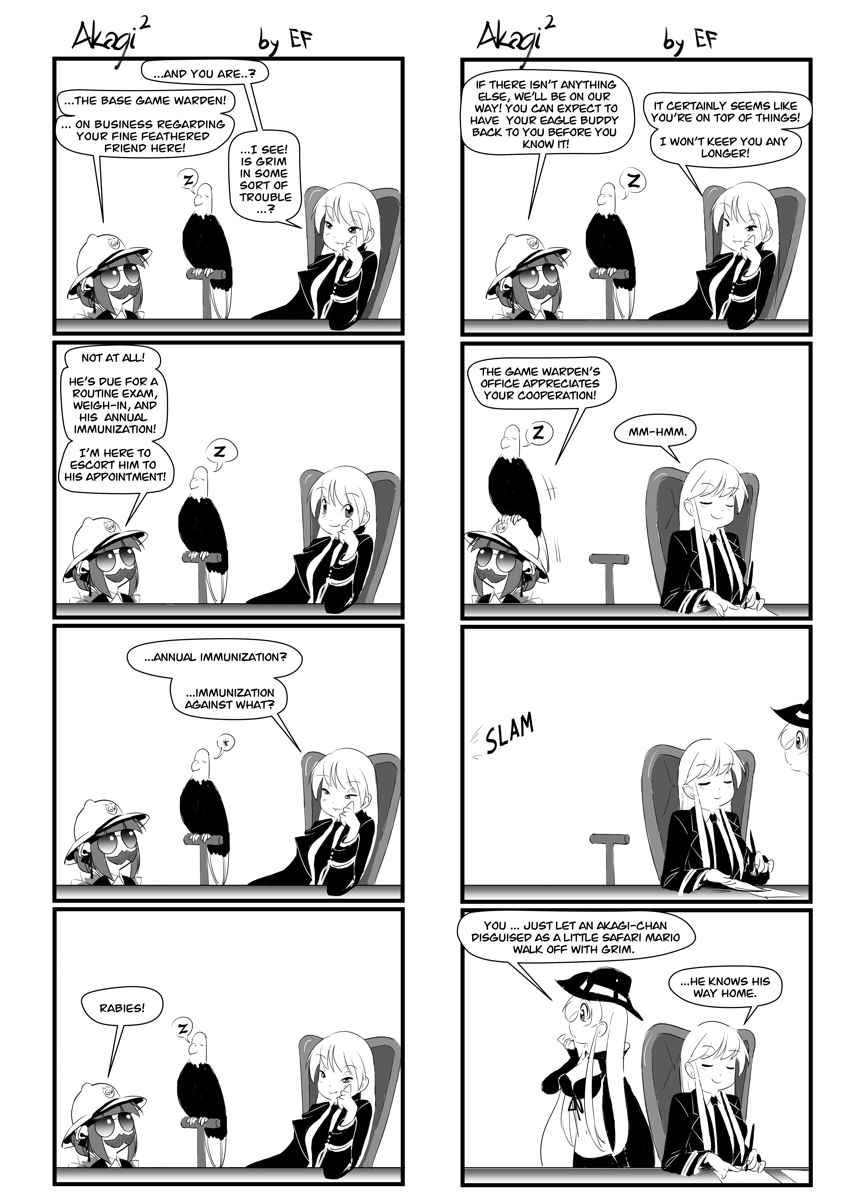Sometimes you can tell from a throwaway panel like this what really gets the mangaka out of bed each day:

It is clear from the shot (and the many similar shots throughout this series) that Ojiro Makoto likes her butts. Some extra time and care has been taken to render those buttocks. Of course the same is true for roughly 100 percent of cartoonists and their particular fetishes, but what I like about this is how mundane Ojiro makes it. This is the third panel of the first page of the twelfth chapter of Neko no Otera no Chion-san, a manga about a teenage boy who moves to live with his distant, slightly older cousin and grandma. While he’s the protagonist, he’s not in the scene. Instead the page opens with a shot of cardboard boxes filled with crap, left over cleaning material and the like before the second panel shows a crowded garden shed, more a storage unit than anything else, with two girls dressed in typical work clothing talking about cleaning it. The final panel then, the one above, is a logical progression, rather than a staged cheesecake shot. There’s no posing, the clothing conceals as much as it highlights and Chion and Hiruma are pretty rather than beautiful. An everyday sort of horniness.

Compare and contrast with a typical chapter from Hori no Su’s Azur Lane 4-koma: Slow ahead, a gag strip where every page has a bit of cheesecake on it like this. Unlike in Chion-san, the fan service is strong in this one, your eyes immediately drawn to that intrusive panel of Cygnet posing. It’s not bad, but it interrupts the flow of the comic. Cygnet both poses and is dressed for fan service, thighs and breasts on prominent display. For what it is, basically an advert for the Azur Lane game, very much a waifu collector game, it’s not bad, but it lacks the subtlety of Chion-san. And for me, that makes the latter all the more stronger. Because ultimately Neko no Otera no Chion-san is about a teenage boy moving in with his attractive, not that much older cousin, that sort of everyday horniness fits the mood of the series far more than an intrusive shot like the above would, even if it’s nominally “sexier”.




